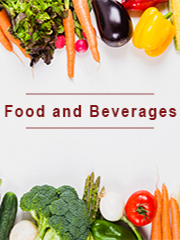The global Hydrolysed Vegetable Protein market was valued at US$ 1462.1 million in 2022 and is projected to reach US$ 1843.9 million by 2029, at a CAGR of 3.4% during the forecast period. The influence of COVID-19 and the Russia-Ukraine War were considered while estimating market sizes.
Hydrolysed vegetable protein is derived from boiling cereals or legumes in hydrochloric acid and then neutralizing the solution with sodium hydroxide. The acid breaks down, the protein present in vegetables into their component amino acids. The resulting product is further known as hydrolysed vegetable protein. Hydrolysed vegetable protein is widely used as a flavor enhancer in many processed foods such as soups, sauces, stews, seasoned snack foods, gravies, hot dogs, dips and dressings. It is also blended with other spices to make seasonings that are used in or on foods.
This report aims to provide a comprehensive presentation of the global market for Hydrolysed Vegetable Protein, with both quantitative and qualitative analysis, to help readers develop business/growth strategies, assess the market competitive situation, analyze their position in the current marketplace, and make informed business decisions regarding Hydrolysed Vegetable Protein. This report contains market size and forecasts of Hydrolysed Vegetable Protein in global, including the following market information:
- Global Hydrolysed Vegetable Protein Market Revenue, 2018-2023, 2024-2032, ($ millions)
- Global Hydrolysed Vegetable Protein Market Sales, 2018-2023, 2024-2032, (K MT)
- Global top five Hydrolysed Vegetable Protein companies in 2022 (%)
The Hydrolysed Vegetable Protein (HVP) market is very fragmented and the competition is fierce. According to the survey, the world's top 5 manufacturers Tate & Lyle, Archer Daniels Midland, Exter, Griffith Foods and Sensient Technologies accounted for less than 20% of the market share in 2019.The technology of each manufacturer is relatively mature, and the world's leading manufacturers are working hard to develop new application areas. As the largest producer, China produced about 160 K tons of Hydrolysed Vegetable Protein (HVP) in 2019, accounting for 40% of the global total approximately. Meanwhile, China is the largest consumption place, with a consumption market share nearly 30% in 2019. Following China, European Union is the second largest consumption place with the consumption market share of about 22%.
We surveyed the Hydrolysed Vegetable Protein manufacturers, suppliers, distributors and industry experts on this industry, involving the sales, revenue, demand, price change, product type, recent development and plan, industry trends, drivers, challenges, obstacles, and potential risks.
Total Market by Segment:
Global Hydrolysed Vegetable Protein Market, by Type, 2018-2023, 2024-2032 ($ Millions) & (K MT)
Global Hydrolysed Vegetable Protein Market Segment Percentages, by Type, 2022 (%)
- Soy
- Corn
- Wheat
- Pea
- Rice
- Others
Global Hydrolysed Vegetable Protein Market, by Application, 2018-2023, 2024-2032 ($ Millions) & (K MT)
Global Hydrolysed Vegetable Protein Market Segment Percentages, by Application, 2022 (%)
- Food & Beverages Industry
- Cosmetic & Personal Care Industry
- Pharmaceutical Industry
Global Hydrolysed Vegetable Protein Market, By Region and Country, 2018-2023, 2024-2032 ($ Millions) & (K MT)
Global Hydrolysed Vegetable Protein Market Segment Percentages, By Region and Country, 2022 (%)
- North America
- US
- Canada
- Mexico
- Europe
- Germany
- France
- U.K.
- Italy
- Russia
- Nordic Countries
- Benelux
- Rest of Europe
- Asia
- China
- Japan
- South Korea
- Southeast Asia
- India
- Rest of Asia
- South America
- Brazil
- Argentina
- Rest of South America
- Middle East & Africa
- Turkey
- Israel
- Saudi Arabia
- UAE
- Rest of Middle East & Africa
Competitor Analysis
The report also provides analysis of leading market participants including:
- Key companies Hydrolysed Vegetable Protein revenues in global market, 2018-2023 (Estimated), ($ millions)
- Key companies Hydrolysed Vegetable Protein revenues share in global market, 2022 (%)
- Key companies Hydrolysed Vegetable Protein sales in global market, 2018-2023 (Estimated), (K MT)
- Key companies Hydrolysed Vegetable Protein sales share in global market, 2022 (%)
key players include:
- Givaudan
- Kerry
- Cargill
- Ingredient
- Exter
- Sensient
- Dohler
- Tate & Lyle
- Symrise
- Archer Daniels Midland
- Koninklijke
- Innova
Outline of Major Chapters:
Chapter 1: Introduces the definition of Hydrolysed Vegetable Protein, market overview.
Chapter 2: Global Hydrolysed Vegetable Protein market size in revenue and volume.
Chapter 3: Detailed analysis of Hydrolysed Vegetable Protein manufacturers competitive landscape, price, sales and revenue market share, latest development plan, merger, and acquisition information, etc.
Chapter 4: Provides the analysis of various market segments by type, covering the market size and development potential of each market segment, to help readers find the blue ocean market in different market segments.
Chapter 5: Provides the analysis of various market segments by application, covering the market size and development potential of each market segment, to help readers find the blue ocean market in different downstream markets.
Chapter 6: Sales of Hydrolysed Vegetable Protein in regional level and country level. It provides a quantitative analysis of the market size and development potential of each region and its main countries and introduces the market development, future development prospects, market space of each country in the world.
Chapter 7: Provides profiles of key players, introducing the basic situation of the main companies in the market in detail, including product sales, revenue, price, gross margin, product introduction, recent development, etc.
Chapter 8: Global Hydrolysed Vegetable Protein capacity by region & country.
Chapter 9: Introduces the market dynamics, latest developments of the market, the driving factors and restrictive factors of the market, the challenges and risks faced by manufacturers in the industry, and the analysis of relevant policies in the industry.
Chapter 10: Analysis of industrial chain, including the upstream and downstream of the industry.
Chapter 11: The main points and conclusions of the report.
